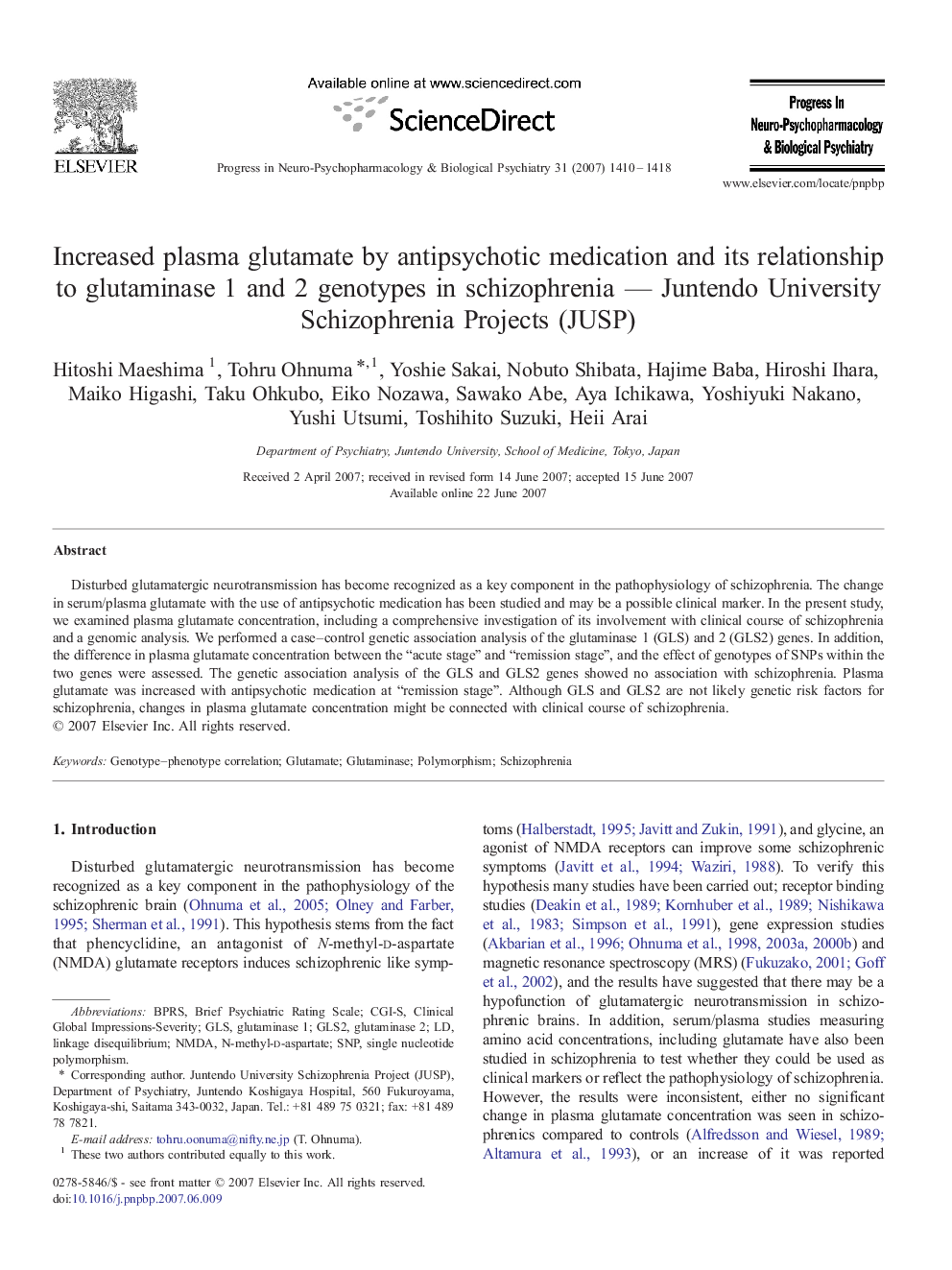| Article ID | Journal | Published Year | Pages | File Type |
|---|---|---|---|---|
| 2566159 | Progress in Neuro-Psychopharmacology and Biological Psychiatry | 2007 | 9 Pages |
Disturbed glutamatergic neurotransmission has become recognized as a key component in the pathophysiology of schizophrenia. The change in serum/plasma glutamate with the use of antipsychotic medication has been studied and may be a possible clinical marker. In the present study, we examined plasma glutamate concentration, including a comprehensive investigation of its involvement with clinical course of schizophrenia and a genomic analysis. We performed a case–control genetic association analysis of the glutaminase 1 (GLS) and 2 (GLS2) genes. In addition, the difference in plasma glutamate concentration between the “acute stage” and “remission stage”, and the effect of genotypes of SNPs within the two genes were assessed. The genetic association analysis of the GLS and GLS2 genes showed no association with schizophrenia. Plasma glutamate was increased with antipsychotic medication at “remission stage”. Although GLS and GLS2 are not likely genetic risk factors for schizophrenia, changes in plasma glutamate concentration might be connected with clinical course of schizophrenia.
